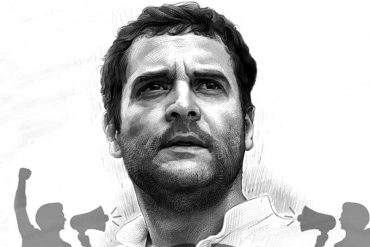The tentacles of financialisation have captured the world. A well-developed and deep-rooted financial system is indispensable for economic growth and development. Banks — primarily as liquidity providers and transformers, with the supplementary role as centres of information processing and analysing creditworthiness — form the vanguard of socioeconomic change. However, from the intermediary role of a catalyst, the financial sector in developed economies has grown in stature, although it has regressed into a headwind.
A quintessential case is the US economy. Though the finance and insurance sectors constitute 8.3% of the GDP, employing 4% of the total workforce, they account for more than 25% of corporate profits. Such magnitude and disproportionality have engendered volatility and inequality in society. Banks lending to non-financial businesses have dwindled to approximately 20%.
The bulk of lending is towards investing in stocks, bonds, mutual funds and other financial instruments to reap short-term profits from speculative demand and rising asset prices. This phenomenon of pervasive quest for short-term gains through investments in financial assets at the expense of building factories, hiring and training workers, and reinvestments in R&D and innovation is called financialisation. Ruefully, non-financial companies are becoming financialised under duress of performance indices from Wall Street shenanigans and securities analysts.
Maynard Keynes — the mercurial British economist widely considered the Father of Macroeconomics — made a definitive distinction between enterprise and speculation. Enterprise is the work of the manufacturing sector to produce goods, whereas the financial sector undertakes speculation. In the wake of the Wall Street Crash of 1929 and the ensuing Great Depression, Keynes reiterated the criticality of economic expansion of the real economy through the establishment of manufacturing industries.
Joseph Schumpeter, the Austrian economist, also established positive correlations between the role of financial institutions in funding innovation and financing the real economy. The industrial development in the US (once the workshop of the world), Italy, France and Germany can be attributed to synergistic and symbiotic relationships between banks and industrial establishments building railroads, dams, canals, roads, townships and myriad forms of physical infrastructure.
When speculation is just a bubble on the sea of enterprise, the economy grows, wages and incomes increase, spurring demand and the resultant multiplier effect, equivalent to the rising tide lifting all boats. Conversely, when speculation abounds with minimal value creation and addition to the real economy, it often creates asset bubbles that burst, inflicting collateral damage to the entire economy. It disrupts livelihoods, erodes wealth, depresses demand and, consequently, flings economies into prolonged recession, which, in contemporary economic parlance, is called ‘Secular Stagnation.’
The people who pass out from Ivy Leagues, M7 schools and European centres of excellence — the elite MBA’s — burn the midnight oil in Wall Street and the City of London, are exclusively engaging in trading between themselves, bits of digital paper with the stamp of speculation and risk written all over it. However, the million-dollar question is how society benefits from these speculative and risky activities.
Financialisation gained traction with the deregulation of banks and financial institutions under the Ronald Reagan administration in the US and Margaret Thatcher in the UK. The Glass-Steagall Act of 1933 — which covered four provisions of banking primarily focused on the separation of powers of commercial and investment banks — was progressively diluted under Paul Volker’s chairmanship of the US Federal Reserve. It was later repealed during Bill Clinton’s presidency.
Neoliberalism became the dominant economic policy of the state, influenced by the Chicago School and their economists, Milton Friedman and Eugene Fama. Chicago School emphasised theoretical models and a finance-driven approach to management education and laid the ideological basis of deregulation and neoliberal policies of the US administration.
Markets replaced companies as the epicentre of business. Friedman was a champion of free-market capitalism bereft of governmental intervention that squarely challenged Keynesian macroeconomic principles. Together with Fama’s Efficient Market Hypothesis (EMH), Friedman’s economic theory posited maximising shareholder value as the sole purpose of any business entity.
With the advent of shareholder capitalism, the short-termism of capital gains and profits became the corporate paradigm. It spelt the death knell for US manufacturing, which initially was relocated to Mexican Maquiladoras and then to South East Asia, and finally, offshoring manufacturing activities to China.
Financialisation triggered an asset-light expansion model for US businesses, where asset-heavy brick-and-mortar manufacturing facilities, investments in research and development, technology, product development, employee training and all that had long-term gestation periods for the Return on Investment (ROI). The business and revenue models shifted from making things to making money from money.
Financial engineering of securities and stocks replaced engineered goods to reap short-term profits. The rise of software products with low asset-capital ratios and marginal costs tending towards zero could be partially attributed to the financialisation of American businesses. Manufacturing declined from 28.1% of nominal GDP in 1953 to 10.3% in 2023.
Financialisation engendered the explosion of private equity firms and corporate raiders in the 1980s, engaged in buying, selling and dismantling companies. American manufacturing companies built townships and participated actively in building communities that were educated and healthy, which, in essence, was the American Dream. When corporate raiders dismembered organisations, divested assets and laid off workers to make it lean and profitable, entire communities suffered.
Both in the US and the UK, this quest for short-term profits for the shareholders diminished the bargaining power of the trade unions as manufacturing was offshored to capitalise on location advantages and cheap labour costs. Share buybacks became a standard corporate strategy that raised the Earnings Per Share (EPS), and the greedy shareholders sold the bought-back stock at inflated prices. Thus, value was created artificially without adding tangible value to the companies.
Hewlett-Packard, GM and Ford are a few examples of American product-based companies. Initially, product superiority gave them market share and competitive advantages. However, later, run by MBAs from premier universities, they jeopardised product innovation by cost-cutting in technological innovations. They chose to manage their growing cash reserves by increasing stock prices and spinning off consumer finance subsidiaries that raked in substantial profits for shareholders. Senior executives in sales, marketing and finance became CEOs of corporations that further decimated the push towards cutting-edge product design and innovation.
Jack Welch of GE, the first superstar CEO, was a poster boy of financialisation. He made ruthless employee retrenchments, closing businesses and outsourcing to China. His proclamation of quarterly earnings and short-term profit maximisation hurt American capitalism.
Once the most valued company on the planet, GE was removed from the Dow Jones Industrial Average in 2018, fallen from glory as it was one of the first companies to be included in the original list. In contrast, Silicon Valley start-ups that later became tech behemoths had fewer MBAs to start with (but predominantly engineers – and are still permeated by technocrats). They developed user-friendly products that have redefined societies, individuals and businesses in unprecedented ways.
Globally, financialisation has exacerbated inequality in society. When banks allocated disproportionate credit for purchasing financial assets rather than financing the production of goods and services, capital income grew faster than labour and wage income. High-income groups benefitted immensely from profits, interests and rents since they owned a huge proportion of these capital assets. In the US, 89% of stocks are owned by the richest 10% of the population. The top 1% have raked in $50 trillion in wealth, and according to the Congressional Budget Office, this upward wealth redistribution accounted for 104 times that of the bottom 20% of the population.
The quantum advancements in telecommunications, coupled with the explosion of the Internet, the World Wide Web and personal computers, further entrenched financialisation in the global economy. Novel financial derivatives were invented in the form of Credit Default Swaps (CDS), Collateralised Debt Obligations (CDO), Interest Rate Swaps, and Options supplanting conventional hedging instruments to mitigate the risk of volatility in currencies and inflation. Investment banks traded these privately as Over The Counter (OTC) in huge volumes, eclipsing exchange-traded derivatives.
The financialisation of corporations, rising inequality and shrinking median wages gave rise to another derivative phenomenon: the financialisation of households. Household debts surged due to finance consumption gaps due to falling real incomes, adjusted for inflation. To fulfil the dream of owning a home, mortgages were released without proper due diligence on creditworthiness. It spurred the subprime mortgage revolution in the United States.
These mortgages, which had a high-risk incidence of default, were repackaged as mortgage-backed securities (MBS) on the stock market, which offered higher rates of returns than government securities and attractive risk ratings from rating agencies like Moody’s, Fitch and Standard & Poor. It created a housing bubble, and with interest rates rising in an Adjustable Rate Mortgage (ARM) regime, borrowers defaulted en masse.
To make matters worse, historical cost accounting was modified to include mark-to-market accounting or fair value accounting to reflect current value prices of assets. It required write-downs, especially of illiquid securities like mortgage-backed securities, credit default swaps, etc. When the housing bubble burst, firms like Lehmann Brothers, which had underwritten guarantees for such volatile securities, became insolvent when the value of those assets plummeted.
The interconnections worldwide — due to online digital trading — set off the Great Recession of 2008. In the pretext of mutualising diversifying risks, they were gambling by taking positions on the outcome of the same event, say whether borrowers will default on mortgages or not!
Governments, trade unions, and worker cooperatives need to take action to reverse the ill effects of financialisation. Promoting local, regional and community financial institutions is critical in supporting local businesses and homebuyers. Stringent laws are required to limit stock buybacks and incentivise long-term investments in factories, employee training and R&D initiatives.
Executive pay must be linked to productive financial performance rather than the stock price movement. The bargaining power of the unions must be reinstated, and broader regulation to reform the political process to weaken the power of corporations, investment banks, private equity firms and hedge funds are warranted.
Paraphrasing the words of Maynard Keynes, it is always better to be conventionally wrong than to be unconventionally right.
-30-
Copyright©Madras Courier, All Rights Reserved. You may share using our article tools. Please don't cut articles from madrascourier.com and redistribute by email, post to the web, mobile phone or social media.Please send in your feed back and comments to [email protected]











